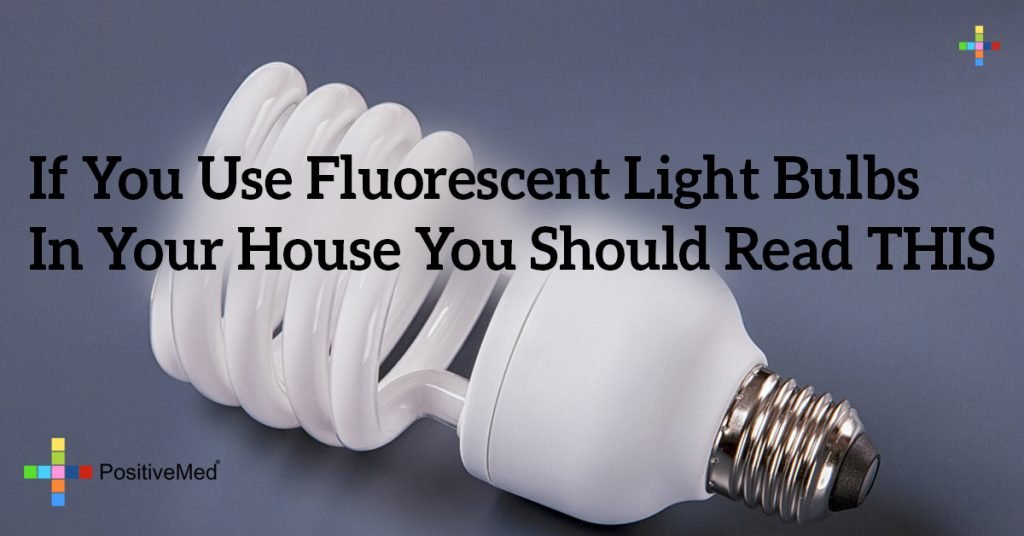
If You Use Fluorescent Light Bulbs In Your House You Should Read THIS
Remember the days when you could buy a box of light bulbs for under a dollar? Those days are gone due to concerns for energy efficiency. The new CFL bulbs are made to last longer and use less electricity. Though these bulbs have a larger cost up front, they are supposed to save you on your electric bill. They are in every grocery and home department store across the country. They look like a funny curly bulb, but these CFL’s have quickly replaced the old fashioned round bulb.

Currently, the bulbs are estimated to be 25 to 30 percent more efficient than the round bulbs, according to a study was done by World Truth. By the year 2020, the expected efficiency is said to rise to 70 percent. By eventually phasing out all the round bulbs, it will reduce greenhouse emissions and also save energy. It sounds great and many people jumped on the bandwagon to replace all their old bulbs. However, they’re better for energy consumption, but are they dangerous for humans to be around? These bulbs have a hidden danger that is sealed within their core. They require disposal and handling in a specific manner.
The Hidden Danger-Mercury
Remember the old oral thermometers that had mercury inside? If they were broken, people always scurried to clean them up, as they were dangerous. These CFL bulbs are full of mercury inside. At even the smallest level of exposure, mercury is known to cause permanent damage to the major organs, such as the liver, kidneys, brain and the central nervous system. Those especially vulnerable to the toxic effects are younger children, the elderly, and infants. Even if the exposure is at a small level, mercury has the capability to cause numerous health problems, like poor motor functioning and an impaired cognitive ability, as well as emotional disturbances. When there are high levels of mercury exposure or the exposure period is prolonged; there are more serious the health problems.
RELATED ARTICLE: This Deadly Poison Is Inside You! Here Is How To Protect Yourself
The Controversy-CFL Bulbs Are Marked Safe
As long as the CFL bulb is intact, the bulb is deemed to be “safe.” However, if the bulb becomes cracked, gets broken or is not disposed of correctly; 4-5 milligrams of mercury can be exposed to that person or family. How many times have you broken a light bulb in your days? An occasion broken light bulb is going to happen, but with these bulbs, that broken bulb could be deadly. True, just a small amount of mercury is leaked, but that small 5 milligram has enough to taint water of up to 6,000 gallons. If that bulb breaks inside the home, what can it do to the atmosphere inside the home? Changing a light bulb is no longer an easy job.
How To Protect Yourself and Your Family
The EPA suggests that when changing or taking care of a broken CFL bulb, all children and pets should leave the room. Immediately open a door or window to allow fresh air into space. If the HVAC unit is running, turn it off and allow the windows to take the fumes to the outside. Don’t ever use a vacuum cleaner or the family broom to try to clean it up. Use a wet cloth to clean up the broken class and any liquids. Place the rag and the bulb into a sealed container and put it outside till it can be disposed of properly. Never leave the bulb fragments exposed outdoors.
After you’ve cleaned up the mess, continue to leave your HVAC unit off for a few hours. The threat follows when people dispose of these bulbs into a normal trash collection site. The landfills have tons of discarded bulbs and that mercury is released into the atmosphere. Now let me ask you this, with all these dangers and requirements just to save a bit of money; is it worth it?
These bulbs not only have mercury, but they are also known to emit ultraviolet radiation. It sounded like a good plan and a step forward in energy conservation, but sometimes the dangers outweigh the benefits.





